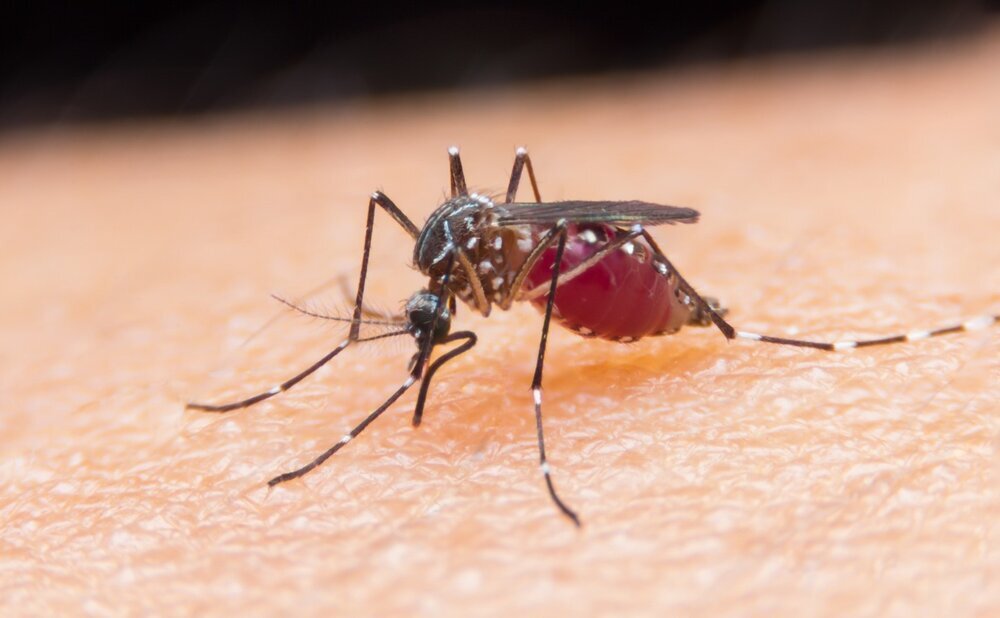WHO considering malaria eradication certificate for Iran

TEHRAN – Iran has not had any indigenous cases of malaria for three years in a row, so the World Health Organization is considering granting a certificate of malaria eradication to the country, Mohammad Mehdi Gooya, head of the health ministry's center for infectious diseases, has said.
Malaria is a mosquito-borne infectious disease that affects humans and other animals; the disease is most commonly spread by an infected female Anopheles mosquito. The mosquito bite introduces the parasites from the mosquito's saliva into a person's blood.
It causes symptoms that typically include fever, tiredness, vomiting, and headaches. In severe cases, it can cause yellow skin, seizures, coma, or death. Symptoms usually begin ten to fifteen days after being bitten by an infected mosquito.
There have been no indigenous cases of malaria infection in the country over the past three years, and patients in Iran brought the disease from outside the borders, from Pakistan and Afghanistan, he stated.
According to the World Health Organization, a country that has not had a local case for three years is eligible for a malaria eradication certificate, and this year a team from the organization will travel to Iran to verify its certification, he stated.
Undoubtedly, receiving a malaria elimination certificate is one of the greatest achievements in the history of the country's health, he highlighted.
“One of the most important health events of the last 100 years was the eradication of malaria, which has existed in Iran for thousands of years,” he said, adding, while the history of the scientific fight against this disease dates back to only 60-70 years ago.
In the late 19th and early 20th centuries, malaria was the most important health problem in the country, especially in northern provinces including the Caspian Sea, he stated, noting, some 5 million cases of malaria were reported annually. But the main step toward its elimination began after World War II.
In those years, the Ministry of Health started a malaria control program with few facilities. By 1989, malaria was under control in most parts of Iran. There were still a few cases other than Sistan-Baluchestan, Kerman and Hormozgan, he explained.
The highest rate of malaria toll was reported in 1990 when 98,000 malaria cases were registered; which then decreased to 12,000 per year, Gooya said.
He further explained that 3,700 volunteers were trained to eliminate malaria and dispatched to all indigenous areas and remote villages.
In 2017, the number of malaria cases in Iran reached less than 100, and since today, no case of native transmission of malaria has been reported, he also noted.
Emphasizing that the great achievement of malaria eradication is not only for Iran, he said that the social, economic, and political dimensions of this achievement are very great and shows the strong political commitment of the country to eliminate malaria, which has been done by allocating the necessary and sustainable budgets, social development measures in the affected areas, and free diagnosis and treatment of the disease.
By receiving the malaria elimination certificate, the desire to invest in three provinces of Kerman, Hormozgan, and Sistan-Baluchestan and areas such as Chabahar that was affected by this disease will increase, he also highlighted.
Among the 22 countries in the Eastern Mediterranean region, the largest country that has been able to eliminate malaria so far is Iran. Many countries, such as the UAE, have achieved this goal, but they are very small and sparsely populated compared to Iran, he stated.
There are 20 countries in the world that are moving towards the elimination of malaria.
WHO African Region carries high share of global malaria burden
According to the latest World malaria report, released in December 2019, there were 228 million cases of malaria in 2018 compared to 231 million cases in 2017. The estimated number of malaria deaths stood at 405,000 in 2018, compared with 416,000 deaths in 2017.
The WHO African Region continues to carry a disproportionately high share of the global malaria burden. In 2018, the region was home to 93% of malaria cases and 94% of malaria deaths.
In 2018, 6 countries accounted for more than half of all malaria cases worldwide: Nigeria (25%), the Democratic Republic of the Congo (12%), Uganda (5%), and Côte d’Ivoire, Mozambique, and Niger (4% each).
Children under 5 years of age are the most vulnerable group affected by malaria. In 2018, they accounted for 67% (272,000) of all malaria deaths worldwide.
FB/MG
Leave a Comment